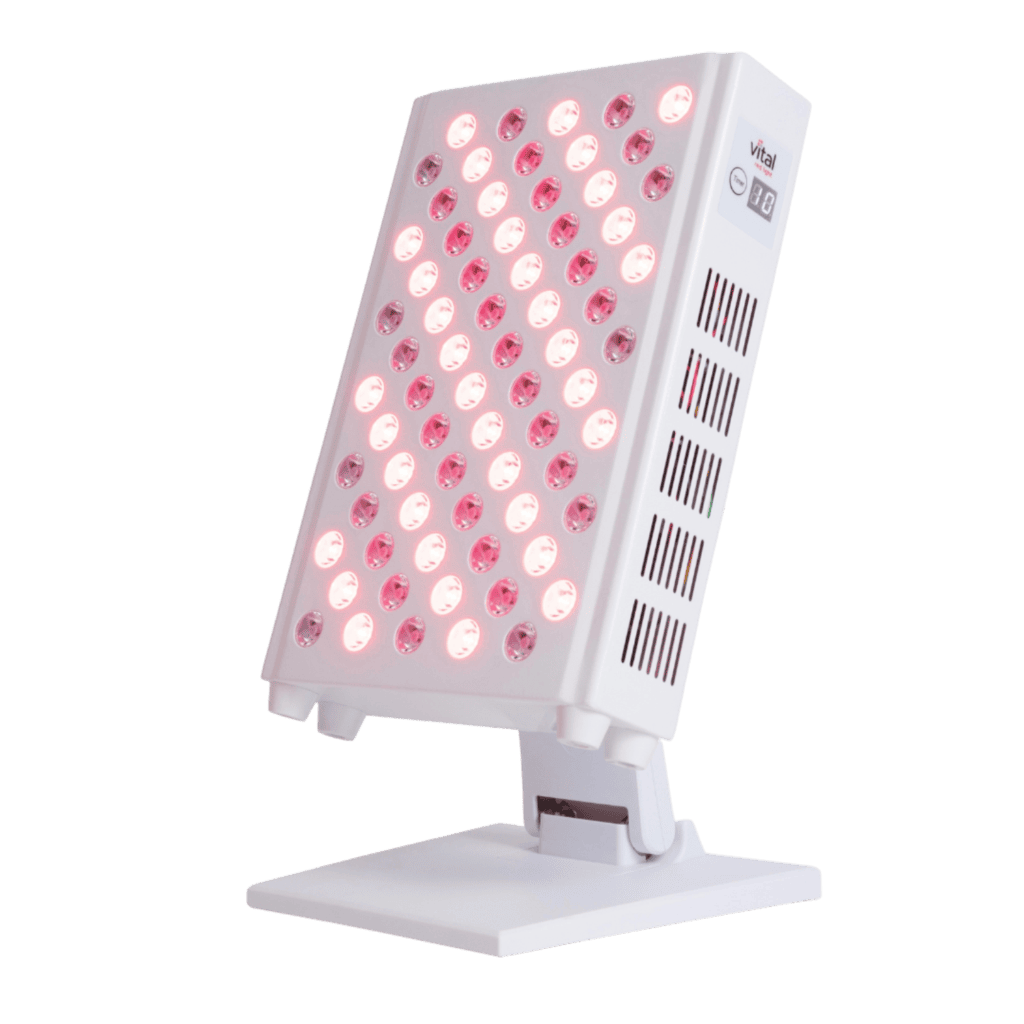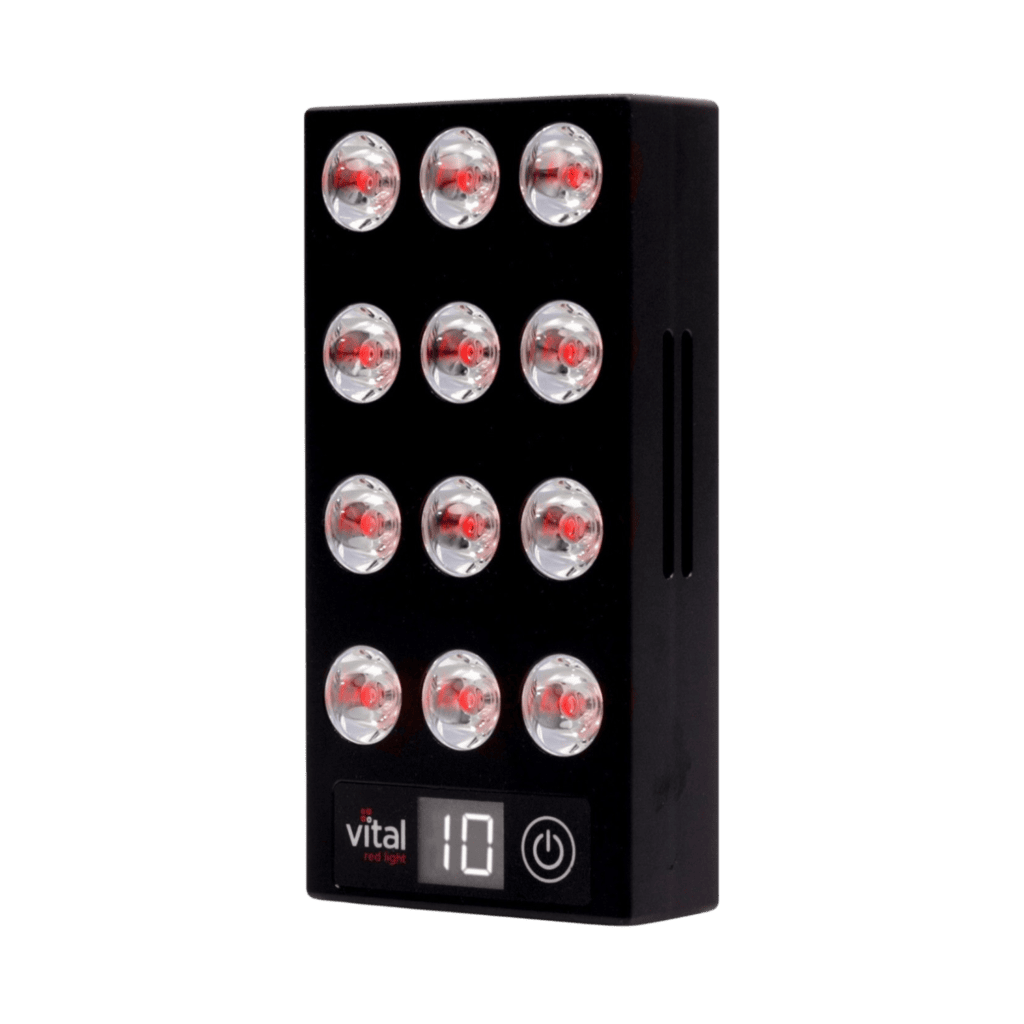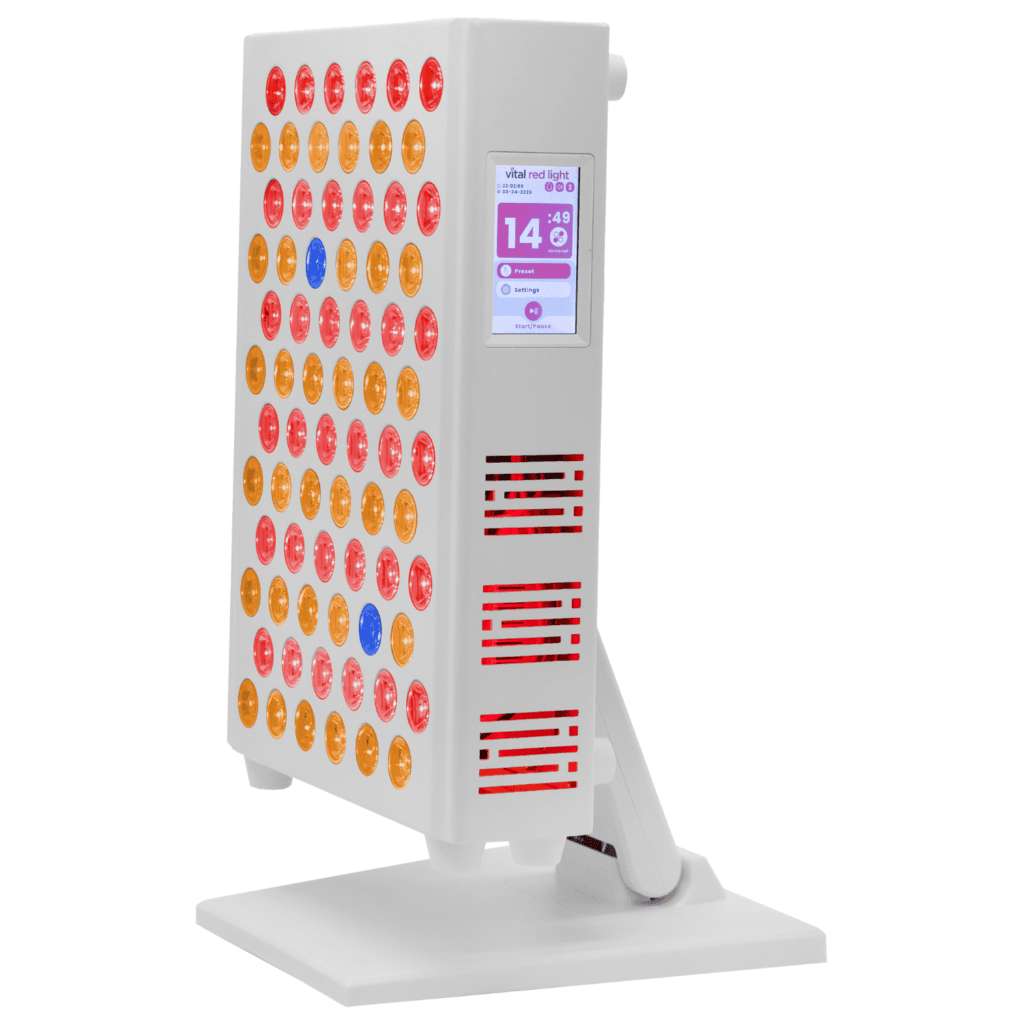Lyme disease is a bacterial infection spread by tick bites (most often Borrelia burgdorferi in the U.S.). It’s the fastest-growing vector-borne disease, with an estimated 476,000 new U.S. cases each year. Early diagnosis and antibiotic treatment typically lead to mild, flu-like symptoms that resolve in a few weeks. However, delayed or inadequate treatment allows the infection to disseminate, potentially affecting multiple body systems.
Lyme disease can leave patients with lingering fatigue, pain, and other symptoms long after standard antibiotic treatment. In fact, up to 10–20% of Lyme patients continue to experience persistent issues even after initial therapy. Frustrated by ongoing symptoms, many are turning to innovative wellness approaches for relief. One emerging option is red light therapy, a non-invasive treatment using low-level red and near-infrared light. Could shining a red light on your body help ease Lyme disease symptoms? This outline explores key insights from top articles on red light therapy for Lyme, breaking down the claims, evidence, and guidance for consumers curious about trying this therapy.
Understanding Lyme Disease and Its Symptoms
Early Symptoms: In the initial stage, Lyme disease often causes an erythema migrans rash (a red expanding “bull’s-eye” rash) along with flu-like symptoms. Patients commonly report headaches, fever, chills, fatigue, and muscle or joint aches in the early weeks. These signs can be subtle or mistaken for other illnesses, so the infection sometimes isn’t caught right away.
Advanced and Persistent Symptoms: If Lyme is not treated promptly, the bacteria can spread and cause more serious issues. Later-stage Lyme disease may lead to severe joint pain and swelling (Lyme arthritis), heart palpitations or inflammation of the heart (Lyme carditis), and neurological problems. Even after antibiotic treatment, a subset of patients experience ongoing problems such as chronic fatigue, cognitive difficulties (brain fog), nerve pain, and sleep disturbances. This condition is often referred to as Post-Treatment Lyme Disease Syndrome (PTLDS) or “chronic Lyme.” Researchers estimate about 1 in 5 Lyme patients suffer persistent symptoms beyond the acute phase, driving interest in complementary therapies for long-term relief.
Why Seek Alternative Therapies
For those coping with enduring Lyme symptoms, standard medicine may offer limited solutions once the active infection is addressed. When antibiotics alone don’t fully resolve Lyme disease, patients often explore adjunct or natural therapies. Approaches like herbal supplements, immune-boosting treatments, and dietary changes are tried – and among these, red light therapy (photobiomodulation) has emerged as a promising supportive treatment. People hope that red light therapy’s cell-energizing and anti-inflammatory effects might target the very issues (joint pain, inflammation, fatigue, etc.) that Lyme leaves behind.
What is Red Light Therapy and How Does It Work?
Overview of Red Light Therapy (RLT)
Red light therapy involves exposing the body to low-wavelength red and near-infrared (NIR) light to stimulate healing processes. It was first used by NASA to help astronauts heal wounds in space, and has since been applied to various health conditions. Unlike high-intensity lasers or UV light, RLT uses gentle, non-heat-producing light. Devices range from full-body panels and beds to small handheld units, which can be used in clinics or conveniently at home. Originally popular for skin rejuvenation (improving wrinkles, scars, and acne), red light therapy is now being explored for pain relief, tissue repair, and reducing inflammation in many conditions – including Lyme disease.
Photobiomodulation (PBM)
Red light therapy is also known by the scientific term photobiomodulation. Essentially, it “bio-modulates” (changes) cellular behavior using light. When the red/NIR light is shined on the body, it penetrates the skin and can reach deeper tissues. The light energy is absorbed by mitochondria (the energy factories of our cells), leading to an increase in cellular energy production (more ATP). Think of it as giving sluggish cells a gentle power boost. With extra energy, cells can repair damage, replicate, and function more efficiently.
How RLT Affects the Body
By energizing cells, RLT sets off a cascade of beneficial effects:
Improved Circulation: Red light causes a slight warming and vasodilation (widening of blood vessels) in tissues, which increases blood flow. Better circulation means more oxygen and nutrients are delivered to areas of injury or inflammation, and metabolic wastes (toxins) are carried away more quickly. In Lyme patients, this is important because it can help flush out inflammatory toxins and byproducts that accumulate during infection and bolster healing in affected areas.
Reduced Inflammation: Studies indicate that RLT has anti-inflammatory effects at the cellular level. The light can modulate the immune response, helping to calm down overactive inflammatory processes. In a 2015 laboratory study on Lyme-infected cells, wavelengths between 630 nm and 900 nm significantly reduced inflammatory markers associated with Lyme arthritis. Less inflammation translates to less swelling, pain, and tissue damage for the patient.
Cellular Repair and Tissue Healing: RLT can stimulate production of collagen and fibroblasts, which repair connective tissue, and promote regeneration of cells. This aids in healing injured tissues (for example, soothing irritated nerves or helping damaged joint cartilage). Patients often report faster recovery from muscle or joint strain when using light therapy, likely due to these pro-healing effects.
Pain Relief: By improving circulation and reducing inflammation, red and NIR light can alleviate pain. Increased blood flow can help wash out pain-causing chemicals, and there’s some evidence that PBM may elevate endorphins or other natural pain-relievers. Lyme sufferers dealing with joint pain or nerve pain have found that regular red light therapy sessions lead to noticeable reductions in discomfort and stiffness.
Safe, Natural Frequencies: Importantly, red light therapy uses wavelengths of light that are non-ionizing and safe – it does not include ultraviolet (UV) light that causes sunburn or DNA damage. The treatment is painless (you just feel gentle warmth) and non-invasive (no needles or drugs). Over 700 clinical trials have been conducted on PBM, and collectively they show it to be a low-risk therapy with significant potential. In fact, the PBM Foundation notes that more than 100 million individual treatments have been given safely, and the FDA has approved many RLT devices for medical use.
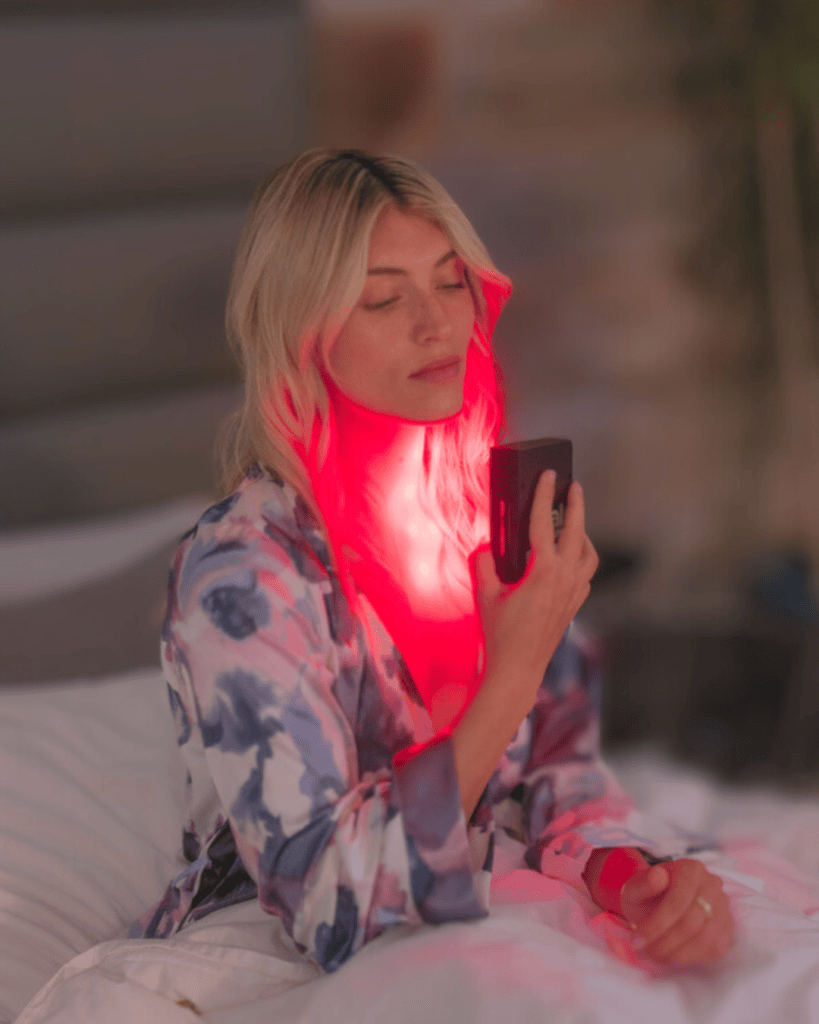
Potential Benefits of Red Light Therapy for Lyme Disease
Red light therapy doesn’t kill Lyme bacteria – it’s not a direct cure for the infection. Instead, it aims to help the body recover and manage symptoms by improving cellular function and reducing harmful inflammation. For Lyme disease patients, especially those with chronic symptoms, RLT may offer several key benefits:
Relief of Joint Pain and Inflammation: Perhaps the most touted benefit is reducing musculoskeletal pain. Lyme often leaves patients with achy, inflamed joints and muscles. Red and NIR light can penetrate into these tissues to calm inflammation and swelling. By boosting circulation to painful areas, RLT helps bring nutrients and immune cells to promote repair while carrying away inflammatory substances. One study on Lyme-infected mice showed significant reduction in arthritis inflammation with specific red/NIR light wavelengths. Many users report that after several weeks of regular red light therapy, their joint stiffness and soreness are greatly diminished.
Boosted Immune Function: Fighting Lyme and recovering from it requires a strong immune system. Preliminary research suggests red light therapy might enhance immune cell activity. In one review, RLT was found to possibly increase the production of white blood cells and improve overall immune response. By supporting your body’s natural defenses, red light could help Lyme patients fend off co-infections or lingering bacterial fragments. Some Lyme patients feel that consistent use of RLT has kept their immune system “on its toes,” reducing the frequency of relapses or new infections (anecdotal reports).
Increased Energy and Reduced Fatigue: Chronic fatigue is a hallmark of long-term Lyme disease. Because RLT works on the mitochondria, it directly helps cells produce more ATP energy. Users often notice improved energy levels and less exhaustion as they continue therapy. Additionally, red light sessions can trigger the release of endorphins and improve blood oxygenation, which together combat fatigue. One piece of supporting evidence is its use in chronic fatigue syndrome – studies have found that infrared sauna therapy (similar concept of light/heat therapy) led to improved fatigue and mood in CFS patients. Lyme patients similarly report feeling more “recharged” and less brain-fogged after a series of RLT treatments.
Detoxification Support: Chronic Lyme can impair the body’s detox pathways, leading to toxin buildup that worsens symptoms. Red light therapy may assist the detoxification process. The warmth from infrared light can induce a mild sweat, and research shows infrared treatments help eliminate certain toxins through the skin. More importantly, by improving lymphatic circulation and blood flow, RLT helps the liver and kidneys clear out metabolic waste more effectively. This can relieve some burden from these organs and potentially ease symptoms like headaches, muscle aches, or cognitive issues that flare when toxins accumulate.
Better Sleep and Mood: Dealing with Lyme symptoms can be stressful and disrupt sleep patterns. Many consumers find red light therapy sessions very relaxing – the gentle heat and light can soothe muscle tension and have a calming effect. Regular use (especially in the evening) might improve sleep quality by promoting relaxation and possibly influencing melatonin levels. Some articles note that red light therapy can help regulate circadian rhythms and has even been explored as a treatment for insomnia and seasonal depression. Lyme patients who add RLT to their routine often report deeper sleep and a lift in mood or reduction in anxiety, likely as a result of pain relief and the general calming physiological effects.
Skin Health and Healing: While not a Lyme-specific benefit, it’s worth noting that red light therapy can improve skin integrity and wound healing. Lyme patients with lingering rashes or scars (from tick bites or from scratching itchy rashes) may see faster fading of these marks. RLT stimulates collagen production, so it helps rejuvenate the skin and heal minor damage. As a bonus, many people enjoy the “healthy glow” and improved skin tone that come with consistent red light use – a small morale boost when chronic illness has you feeling run down.
Scientific Evidence & Testimonials: Scientific research on RLT for Lyme is still in early stages, but what exists is promising. The 2015 study mentioned earlier provided a proof of concept that the wavelengths in red/NIR light directly reduce Lyme-related inflammation. No large clinical trials on Lyme patients have been completed yet, but smaller studies and case reports show trends of symptom improvement. Moreover, anecdotal evidence abounds: many Lyme warriors have shared personal success stories using red light therapy. For example, the non-profit Project Lyme notes that numerous patients in their network have tried RLT and “claimed benefits similar to those listed above”, even though formal research is ongoing. These testimonials – ranging from reduced joint pain to “finally having energy to exercise again” – are encouraging to others considering the therapy.
(While these benefits sound exciting, it’s important to approach any new treatment with realistic expectations. Let’s next look at how to properly use red light therapy, and what precautions to keep in mind, to maximize these potential benefits.)
How to Use Red Light Therapy for Lyme Disease (Effectively and Safely)
If you’re interested in trying red light therapy for Lyme relief, it’s crucial to use it correctly for the best outcomes. Here are some guidelines and tips for effective use:
Consult with a Healthcare Provider: Before starting RLT, talk to your doctor – ideally a Lyme-literate medical doctor (LLMD) or healthcare provider who understands your condition. They can help determine if red light therapy is appropriate for your specific case and how to integrate it with your existing treatments. Your doctor may also point you to reputable clinics or advise on at-home device use. (While RLT is generally safe, it’s wise to get medical input, especially if you have co-infections or other complicating health issues.)
Choose the Right Device: Red light therapy is available in clinics (some physical therapists, dermatologists, or wellness centers offer it), but owning a home device allows consistent use. There are various products on the market – from handheld lamps to large panels or beds. For whole-body or multi-symptom Lyme relief, a high-output panel that emits both 660 nm red light and 850 nm near-infrared light is recommended, as this covers surface and deeper tissue treatment. Devices offered by reputable companies such as Vital Red Light are often FDA-cleared and designed for therapeutic use. When choosing, consider the treatment area size, power (irradiance), and convenience features like timers or stands.
Follow Usage Instructions: Always read and adhere to the device’s manual for distance and session time. Dosage matters – more is not always better. A typical red light therapy session lasts about 10–20 minutes, and you’ll usually position the device 6–24 inches away from your body (distance can vary by device strength). For example, one might sit or stand 1 foot from a panel for 15 minutes to treat back and joint pain. Many at-home devices have an auto shut-off timer (often around 10 minutes) to prevent overuse. It’s wise to start with shorter sessions (5–10 minutes) to see how you feel, then gradually increase up to the recommended time per session.
Consistency is Key: Red light therapy tends to yield benefits with regular and continuous use, rather than one-off sessions. Make it a part of your daily or weekly routine. Experts suggest using RLT multiple times per week, or even daily for chronic conditions. In practice, Lyme patients might do a 10-15 minute session every day on problem areas. According to health coaches and RLT providers, spending about 10–20 minutes daily under a quality red/NIR light device can accelerate the healing process and improve symptom relief. Keeping a consistent schedule (say every evening or each morning) helps maintain the therapy’s cumulative benefits, much like exercise or medication.
Target Problem Areas (and Whole Body): For symptom relief, aim the light at areas where you feel pain or discomfort. For instance, if you have Lyme arthritis in the knees, position the device toward your knees; if you experience brain fog or headaches, you might shine the light on the back of your neck or across the forehead (some people even use special red light head caps for neural benefits). Because Lyme is systemic, many choose to do full-body sessions when possible – standing in front of a large panel to expose as much of the body as possible. This ensures benefit to multiple systems (immune, nervous, musculoskeletal). Tip: Stay at a comfortable warmth – the goal is gentle light, not intense heat on the skin.
Protect Your Eyes: Red light therapy should not harm the eyes with brief exposure, but it’s bright and precaution is smart. Most devices come with goggles – wear them. Particularly when treating areas near the face or using high-intensity panels, shield your eyes to prevent strain or injury. Never stare directly into the LEDs. For treating around the eyes (for skin or sinus benefits), keep your eyes closed and covered with an eye mask or the provided goggles.
Be Patient and Track Progress: It may take several weeks of regular use to notice significant improvements. Keep a log of your symptoms to see if they trend better (e.g. record daily pain levels, energy, sleep quality). Many users report subtle changes after a few sessions (like sleeping slightly better), with more obvious symptom relief after one to two months. If you experience any temporary symptom flares (some report a mild detox reaction or slight fatigue initially), you can reduce session time and build up more slowly. Overall, listen to your body’s responses.
Combine with Healthy Habits: RLT works best as part of a holistic Lyme management plan. Continue your doctor-prescribed treatments (antibiotics, supplements, etc.) and supportive measures (diet, hydration, rest). Red light therapy will complement these by optimizing cellular conditions for healing. For example, staying well-hydrated and doing gentle exercise can further improve circulation and detoxification alongside your light sessions. Think of RLT as one tool in your toolbox for wellness.
At-Home Device Safety: At-home red light devices are generally very safe to use, as long as you use them as directed. They use much lower power than medical lasers, so the risk of burns or damage is minimal. Ensure the device is on a stable surface or mounted securely (to avoid it falling on you – panels can be heavy). Allow the device to cool as needed if it’s not designed for continuous use. Keep it clean (wipe down occasionally) and store it properly. If treating a child or pet (some people do use red light on pets with vet guidance), supervise carefully. Warning: Do not use RLT over any areas with known cancerous tumors unless cleared by a doctor, as the therapy increases cellular activity and could theoretically stimulate malignancies.
Risks, Considerations, and Expert Opinions
While red light therapy is viewed as a low-risk wellness treatment, it’s important to understand its limitations and considerations, especially when used for a serious condition like Lyme disease:
Minimal Side Effects: The good news is, RLT has an excellent safety profile. According to the Cleveland Clinic and other expert sources, red light therapy appears to be safe and isn’t known to cause side effects when used properly in the short term. Users occasionally report mild skin warmth or temporary redness after a session, but this usually subsides quickly. Unlike UV tanning beds, RLT does not use ultraviolet light, so it won’t burn your skin or increase skin cancer risk. Just follow recommended exposure times – doing extremely long sessions or falling asleep under the device could lead to skin irritation or burns. Eye protection, as mentioned, is important to prevent any potential retinal light damage.
Not a Standalone Cure: It’s crucial to approach red light therapy as a complementary treatment for Lyme disease, not a standalone cure. Lyme is a bacterial infection, and RLT does not kill bacteria or clear an active infection from your body. So, do not abandon proven treatments like antibiotics when necessary. Think of RLT as a supportive therapy to help your body recover and manage symptoms in conjunction with standard care. Experts emphasize that a multi-system approach is needed for chronic Lyme; red light can be one part of that integrated plan. Always discuss with your doctor how to incorporate RLT – for instance, you might use it to alleviate joint pain while continuing antimicrobial treatments for any persistent infection.
Ongoing Research (Manage Expectations): While there is genuine excitement about photobiomodulation, the research specific to Lyme disease is still emerging. So far, results look promising but larger human studies are needed to conclusively prove efficacy. No gold-standard randomized clinical trial on Lyme patients has been completed yet. This means that, scientifically, RLT is not yet an established Lyme therapy, but rather an experimental or adjunct option. Many healthcare professionals remain cautiously optimistic – they acknowledge the positive case reports and preliminary studies, yet call for more data. As a consumer, it’s wise to keep your expectations realistic: you may experience improvement in symptoms, but individual results can vary. Some patients might feel dramatic relief, while others notice only modest changes. Key expert opinion: “Red light therapy shows potential, but more quality studies with larger numbers of people are needed” to fully validate benefits for Lyme.
Cost and Accessibility: Red light therapy can require an upfront investment. Home devices can range from a couple hundred to a few thousand dollars depending on size and power. High-end panels (like those used in Vital Red Light’s product line) tend to cost more but also deliver stronger light output for potentially better results. Consider it an investment in your health, and compare warranties and reviews. On the flip side, doing RLT sessions at a spa or clinic can cost $50-$100+ per session, which adds up if done frequently. Most insurance plans do not cover red light therapy for Lyme (since it’s considered experimental for this use), so expect to pay out-of-pocket. From a cost perspective, if you anticipate long-term use, purchasing a quality home device may be more economical than repeated clinic visits.
Contraindications: There are very few scenarios where red light therapy is contraindicated, but a few worth noting: If you are on medications that cause light sensitivity (photosensitizing drugs), check with your doctor – although those usually relate to UV light sensitivity, it’s good to be cautious. If you have a condition like epilepsy that can be triggered by light, use RLT only under medical advice (and avoid flashing/pulsing light settings). Pregnant women should consult their OB/GYN before using RLT on the abdominal area (as a precaution, even though red light is not ionizing). Also, if you have active cancer, get clearance from your oncology team before using RLT over tumor sites.
Expert Endorsements: An increasing number of integrative and functional medicine practitioners are incorporating photobiomodulation for Lyme and other chronic illnesses. They observe that it can help reduce patients’ dependence on pain medications and improve well-being. Dr. Eva Sapi, a Lyme researcher, has spoken positively about light therapies as part of a holistic Lyme treatment approach. The Global Lyme Alliance notes that red light therapy is “effective and safe” per existing studies and that equipment is FDA-approved, while also urging patients to use it under guidance and not as a sole remedy. The consensus among experts: when used responsibly, red light therapy is a low-risk tool that may offer relief for some sufferers, making it a worthwhile option to consider in the battle against chronic Lyme symptoms.
Conclusion
Living with Lyme disease’s persistent symptoms can be challenging, but therapies like red light therapy are shining a new light on hope for relief. To recap, red light therapy (photobiomodulation) is a gentle, non-invasive treatment that energizes cells and reduces inflammation. For Lyme patients, this can translate into less joint pain, improved energy, better mood, and enhanced overall healing. Multiple articles and studies highlight its safety and potential, and while more research is needed, many patients have already made it a vital part of their self-care routine.
If you’re considering red light therapy, remember to pair optimism with due diligence. Consult your healthcare provider, use a quality device properly, and track your progress. When used consistently (e.g. 10-20 minutes daily) and combined with standard Lyme treatments, red light therapy may accelerate your recovery and improve quality of life. At-home devices (that we offer here at Vital Red Light) put this tool in your hands, literally – empowering you to support your body’s healing process from the comfort of home.
In the end, while RLT isn’t a magic cure, it represents a promising and consumer-friendly approach to managing Lyme disease’s long-term effects. For many, it’s an illuminating step forward on the journey to feeling better. Talk to your doctor about red light therapy, do your research, and consider giving it a try as part of a comprehensive Lyme management plan. With caution and consistency, you just might find some much-needed relief under the glow of red light.







